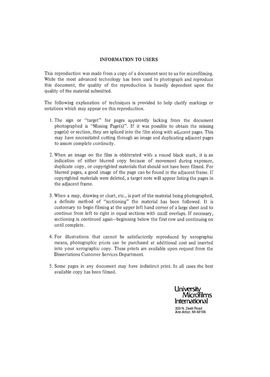| dc.contributor.author | Abu-rizaiza, Omar Seraj, | en_US |
| dc.date.accessioned | 2013-08-16T12:28:49Z | |
| dc.date.available | 2013-08-16T12:28:49Z | |
| dc.date.issued | 1982 | en_US |
| dc.identifier.uri | https://hdl.handle.net/11244/5081 | |
| dc.description.abstract | The future water requirements were matched against the available water resources, and it was found that the limited ground water reserves must play a major role in order to meet the future water requirements. To reduce this dependency on ground water, a long range adequate comprehensive water plan is needed. | en_US |
| dc.description.abstract | The developed models showed that municipal water requirements will increase five-fold in thirty years, while irrigational water requirements will be more than doubled during the same period. The study also showed that a vast amount of ground water is available. However, this ground water, in general, is non renewable and occasionally of poor quality. Also adding to the water supply are the surface water which averages 2000 MCMY and desalination plants which are producing 66 MCMY at present and will be increased by ten-fold in the coming decade. | en_US |
| dc.description.abstract | Historical socio-economic and climatological data were collected and assimilated to develop the water requirements models. Due to the lack of adequate available information, assumptions had to be made in several instances. For this reason, the municipal water requirements were divided into rural and urban. The rural water requirements projection was based upon general observations from previous studies and visits to such areas. The urban as well as irrigational models were statistically developed by the use of regression analysis. The industrial water requirements were also divided into two main categories: (1) water requirements for industries, which use salt water as a cooling medium; (2) water requirements for industries which do not use salt water for the same purpose. In the first category, the industrial water requirements for contact purposes only, processing and sanitary, were forecasted. However in the second category, the amount of water intake to replenish the water irrecoverably consumed in the production processes were forecasted. | en_US |
| dc.description.abstract | The first step that is needed in any water plan is to determine the future water requirements. The primary determinants are municipal, irrigational and industrial. The first objective herein was to develop several models to forecast these different requirements in Saudi Arabia. The second objective was to evaluate the water resources availability and requirements, providing recommendations for future water conservation, to enable this supply to more easily meet the demand. | en_US |
| dc.format.extent | x, 212 leaves : | en_US |
| dc.subject | Engineering, Civil. | en_US |
| dc.title | Municipal, irrigational and industrial future water requirements in Saudi Arabia. | en_US |
| dc.type | Thesis | en_US |
| dc.thesis.degree | Ph.D. | en_US |
| dc.thesis.degreeDiscipline | School of Civil Engineering and Environmental Science | en_US |
| dc.note | Source: Dissertation Abstracts International, Volume: 44-02, Section: B, page: 0560. | en_US |
| ou.identifier | (UMI)AAI8306735 | en_US |
| ou.group | College of Engineering::School of Civil Engineering and Environmental Science | |
